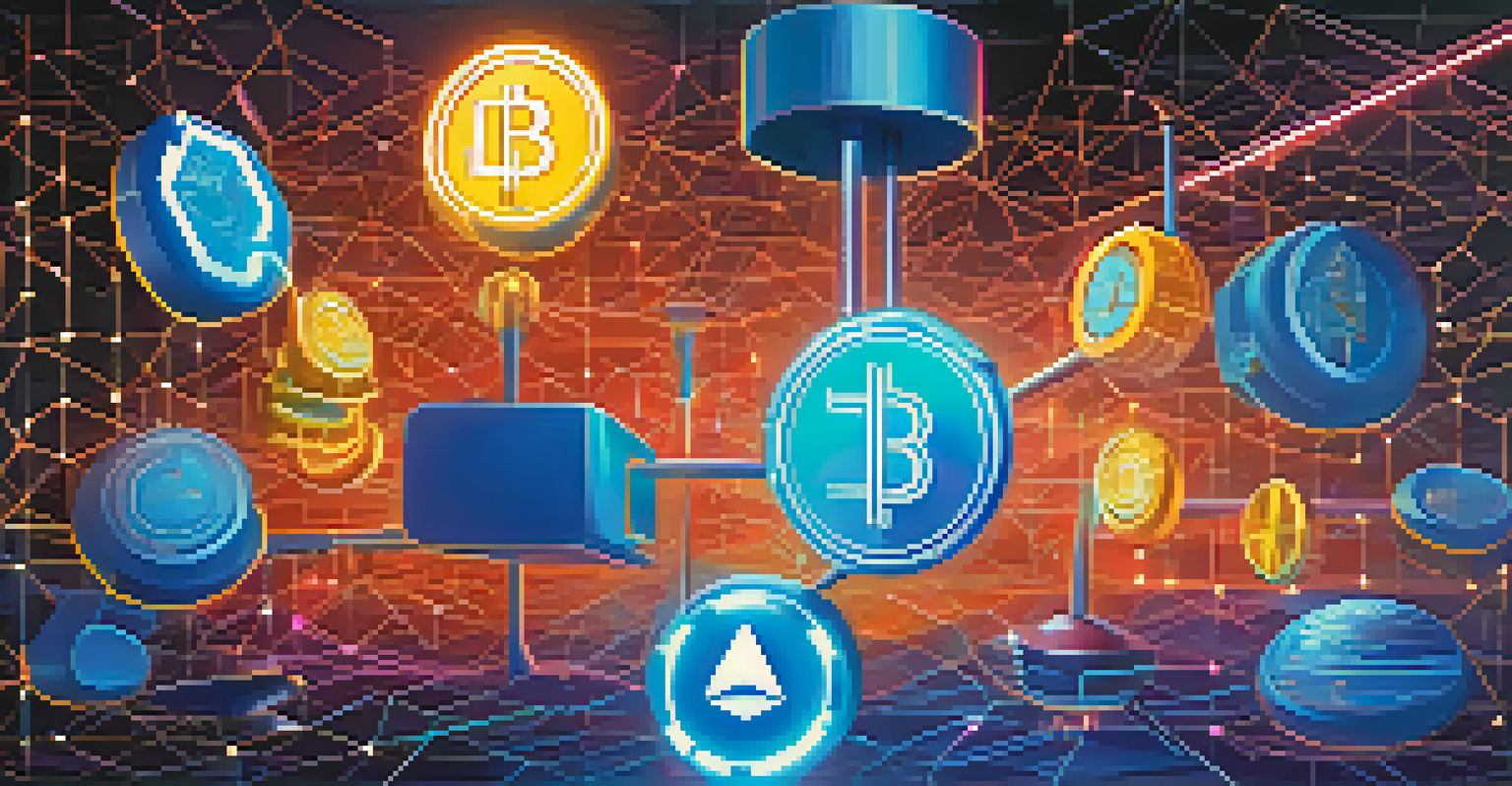Comparing Traditional Asset Trading vs. Tokenized Assets

Understanding Traditional Asset Trading Basics
Traditional asset trading refers to buying and selling physical or financial assets like stocks, bonds, and real estate. This process often involves brokers and various intermediaries, making it somewhat complex. Investors typically rely on established markets and regulations to ensure fair trading practices and liquidity.
The greatest investment you can make is in yourself. The more you learn, the more you'll earn.
One of the main benefits of traditional trading is its long history and established frameworks. Investors can feel secure knowing that these systems have been tested over time. However, this also means that the processes can be slow, with hours of waiting for transactions to settle or for market information to be updated.
Additionally, traditional asset trading usually requires significant capital to get started, making it less accessible for everyday investors. This often results in a gap where only wealthier individuals can participate actively in the market.
Introduction to Tokenized Assets
Tokenized assets represent a digital version of an asset on a blockchain, making them easily transferable and divisible. These assets can include anything from real estate to art, and even company shares, all represented through tokens. This innovation provides a modern approach to trading that leverages technology for greater efficiency.

One of the standout features of tokenized assets is their accessibility. With fractional ownership, investors can buy smaller portions of high-value assets, breaking down barriers that often exclude smaller investors in traditional markets. This democratizes investment opportunities and opens new possibilities for wealth generation.
Traditional Trading: Established Yet Slow
While traditional asset trading offers security through established frameworks, it often suffers from slow processes and high entry barriers for average investors.
Moreover, tokenized assets operate on a 24/7 basis, allowing for transactions at any time. This flexibility is a significant shift from traditional trading hours, catering to a global investor base who may not align with conventional market hours.
Key Differences in Liquidity Between Both Models
Liquidity refers to how quickly an asset can be bought or sold without affecting its price. Traditional markets, while established, can sometimes face liquidity issues, especially in niche assets. This can lead to delays and increased costs when trying to execute trades.
In investing, what is comfortable is rarely profitable.
In contrast, tokenized assets tend to offer improved liquidity due to their fractional nature and the global reach of blockchain technology. Because tokens can easily be bought and sold on various exchanges, many investors find that they can enter and exit positions more freely and quickly.
This enhanced liquidity can also lead to more competitive pricing. As a broader range of investors can participate in the market, the demand can help maintain asset prices, benefiting all parties involved in the trading process.
Regulatory Environment: Different Challenges
The regulatory landscape for traditional asset trading is well-established, with clear guidelines designed to protect investors. These regulations often provide a sense of security, ensuring that companies adhere to financial standards and practices. However, regulatory compliance can also slow down processes and increase costs.
On the other hand, the regulatory environment for tokenized assets is still evolving. While this offers some exciting opportunities for innovation, it also presents challenges, as many countries are still figuring out how to classify and regulate these digital assets. This uncertainty can create risks for investors who may not fully understand the implications.
Tokenized Assets: Accessible and Fast
Tokenized assets revolutionize trading by allowing fractional ownership and 24/7 transactions, making investment opportunities more accessible to a wider audience.
As authorities begin to catch up with technological advancements, we can expect more clarity in the regulations surrounding tokenized assets. Until then, investors should stay informed and cautious as they navigate this rapidly changing landscape.
Transaction Costs: A Comparative Analysis
Transaction costs in traditional asset trading can add up quickly, especially with brokers' fees and commissions. These costs can deter small investors from participating and may lead to reduced overall returns on investment. Depending on the asset class, these fees can significantly eat into profits.
Conversely, tokenized assets often have lower transaction costs due to the absence of intermediaries. Blockchain technology allows for peer-to-peer transactions that can be completed with minimal fees. This efficiency can lead to higher net returns for investors, making tokenized assets more appealing.
However, it's essential to remain mindful of potential hidden costs, such as network fees on blockchains. While these costs are typically lower, they can fluctuate based on network congestion and other factors that investors should consider when trading.
Security and Trust: Evaluating Both Systems
Trust is a cornerstone of successful trading, and traditional asset markets have built a reputation over decades. Regulations and established institutions help create an environment where investors feel confident in their transactions. However, trust can still be shaken by fraud, market manipulation, and other issues.
Tokenized assets introduce a new level of transparency and security through blockchain technology. Each transaction is recorded on a public ledger, making it nearly impossible to alter historical records without detection. This transparency can help build trust among investors who may be wary of traditional systems.
Liquidity: A Key Differentiator
Tokenized assets generally provide better liquidity compared to traditional markets, enabling quicker and more flexible trading options for investors.
Still, the novelty of blockchain and tokenization raises questions for some investors. Education and awareness are vital as the market matures, ensuring that individuals understand how to safely navigate this new landscape.
Future Prospects: What Lies Ahead for Both Models?
As technology continues to evolve, the future of both traditional and tokenized asset trading looks promising. Traditional markets may adapt by integrating new technologies to streamline processes and reduce costs. This evolution could lead to a more efficient trading environment, benefiting all investors.
On the other hand, tokenized assets are poised for significant growth as awareness and acceptance increase. As regulations become clearer, more institutions may embrace tokenization, leading to broader participation and innovation in the space. This could reshape how we think about ownership and investment.

Ultimately, investors may find unique opportunities in both traditional and tokenized assets. By understanding the strengths and weaknesses of each model, they can make informed decisions that align with their financial goals.